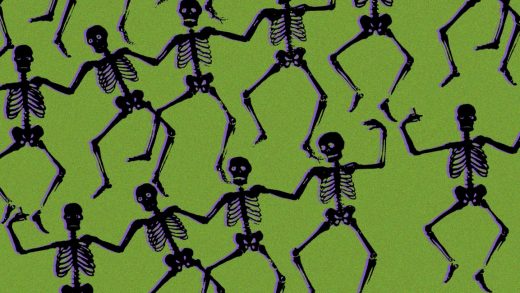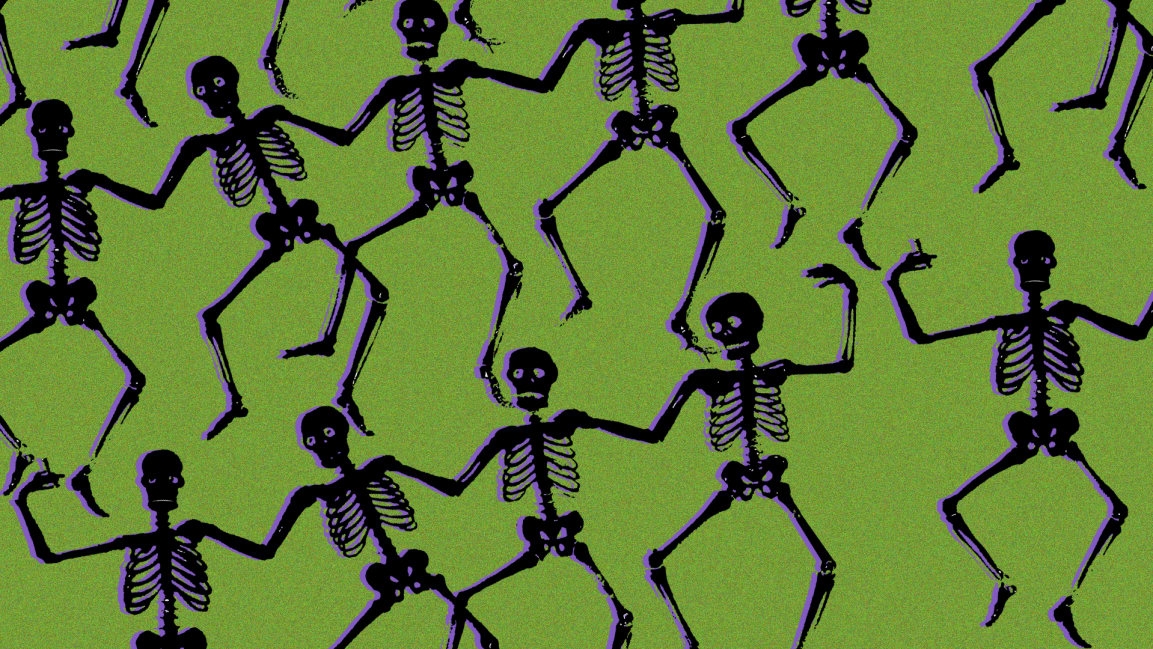The scariest song ever, according to Pandora, is not the one you think
No Halloween party is complete without spooky music.
The situation demands songs that project menace, nihilism, and the distinct possibility that at some point everyone in the room will discard their masks and descend upon you in ritual sacrifice. “Monster Mash,” while roundly considered the de facto national anthem of Halloween, is too kitschy to truly carry that weight. And yet it often makes the cut, surrounded by classics like “Sympathy for the Devil,” “Somebody’s Watching Me,” “Season of the Witch,” and for reasons that are difficult to articulate, the theme from Ghostbusters. These are the kinds of songs that populate Spotify’s Halloween 2019 playlist, because they are the established standard-bearers. But according to competitive streamer Pandora, there’s a neglected set of songs that are more inherently suited to send shivers up spines.
Over the past decade, Pandora has used its Music Genome Project, which it bills as “the most sophisticated analysis of music ever undertaken,” to break songs down into 450 attributes and match them to listener patterns. Now the company has focused all that insightful data toward determining the scariest songs of all time. Topping the list is not Michael Jackson’s “Thriller,” which is perhaps for the best from the perspective of 2019, but rather, Nine Inch Nails’s 1994 creeper, “The Becoming.”
Although the quality of what makes a song spooky rests in the ear of the beholder, Pandora arrived at this conclusion scientifically.
“Scary songs use key, tempo, and timbre to create tension and manipulate the way the listener interacts with sound,” says Steve Hogan, director of Music Analysis at Pandora. “This includes the use of what scientists call ‘nonlinear’ sounds, which are generally scratchy, disorganized, and chaotic, like the sound of vocal cords vibrating violently during a blood-curdling scream. Humans, and many other species, are hardwired to perceive such sounds as life-threatening.”
Some may be relieved to find a logical explanation for their lizard-brain survival mode reaction to hearing the music of Nine Inch Nails. Nonlinear sounds weren’t the only factor that determined which songs made the list, though.
“The data science team identified structural and musicological properties best fit for frightening moods, including anguished, distraught, eerie, harsh, menacing, spooky, tense, anxious, and volatile, and scored each song against these traits,” Hogan continues. “Common attributes we found include that most of these songs are in minor key, and they include use of distortion, sound effects, have an aversion to melody, and use exotic intervals and time change.”
So there you have it. Anyone who wants to be admired for being a timely curator of terrifying tracks this year should give prime Halloween party real estate to “I Got 5 On It [Tethered Mix from Us]”. However, anyone who wants to tap in to their friends’ brain chemistry to give them a truly spookifying experience should consider taking a cue from Pandora’s Halloween Party Radio and use some of the 10 scariest songs of all time.
-
1) Nine Inch Nails, “The Becoming”
“This song makes use of distorted ‘nonlinear’ instrument timbres and effects, which humans are programmed to find distressing. This contrasts with the hushed and screaming vocals, which create a suspenseful and unsettling mood. Melodically, this song makes use of an exotic-sounding scale, which features a major third, but a flat second scale degree, which gives a dissonant quality.”
“Like ‘The Becoming,’ there is more use of distorted, ‘nonlinear’ sound along with aggressive vocal attitude, and this one is in a minor key, which is usually perceived as a ‘dark’ sound.”
“The mood of this song is dominated by the tonal quality of the instruments, including distorted riffs and scratchy guitar solos. There is a high level of dissonance between the chromatically descending guitar line and the vocal, which is not a melody exactly but a series of monotonic, almost unrelated pitches that clash with the accompaniment. The lo-fi aesthetic and freaky vocal delivery makes for an unsettling experience, like being chased through the woods by a chainsaw-wielding maniac.”
“The combination of lo-fi production, synth pads, and an exaggerated reverb effect creates a menacing, claustrophobic quality. The song finishes with an intense wall of sound, which, along with the staccato and insistent bass guitar rhythm, makes this a truly anxiety-provoking track.”
“Due to its sheer aggression, it’s a typical example of the death metal genre: It’s loud and distorted, includes a fast tempo, makes use of technically proficient drumming and guitar riffs, and is rhythmically complex in the form of shifting tempos and syncopated hits. The vocals are extreme and gritty and a good example of the ‘death metal growl.’ Lyrically, it’s confrontational and threatening.”
“Similar to the Lamb Of God in its aggressive, confrontational vocal attitude, ‘Ænima’ also features loud distorted tones throughout, but there is some dynamic range too, with some quieter, more drone-like stretches.”
“Like many Nirvana songs, this one defies pop conventions. The harmonic progression is difficult to pin down as major or minor, but there is an unmistakable dark and menacing quality to the music. There is a dissonance between the vocal melody and instrumental parts that is disorienting and can be a bit disturbing to the listener. It makes use of heavy, distorted tones but also features more quiet, brooding stretches.”
“This song relies on loud, distorted timbres and some ‘nonlinear’ tones to create an aggressive, frightening effect that will transport you straight to the dungeon of despair. The relentless pounding of the drums and the deep, sludgy doom-guitar riffs give this song a truly menacing and diabolical feel.”
“This song has a creepy combination of tones, including heavier distorted ones, alongside more ambient and suspenseful tones that will leave you convinced the demons are watching you. The melody at times makes use of an exotic-sounding scale that adds to the mood—the first two vocal notes you’ll hear form a ‘diminished 5th,’ a musical interval which, since the 18th century, has been nicknamed ‘Diabolus in musica,’ or ‘The Devil in music’ due to its dissonant quality.”
“‘Eternal Refuge’ is another death metal entry—therefore, it’s extreme in its volume and distortion, with that famous ‘death metal growl.’ Try putting this on at home in the dark.”
Fast Company , Read Full Story
(14)



